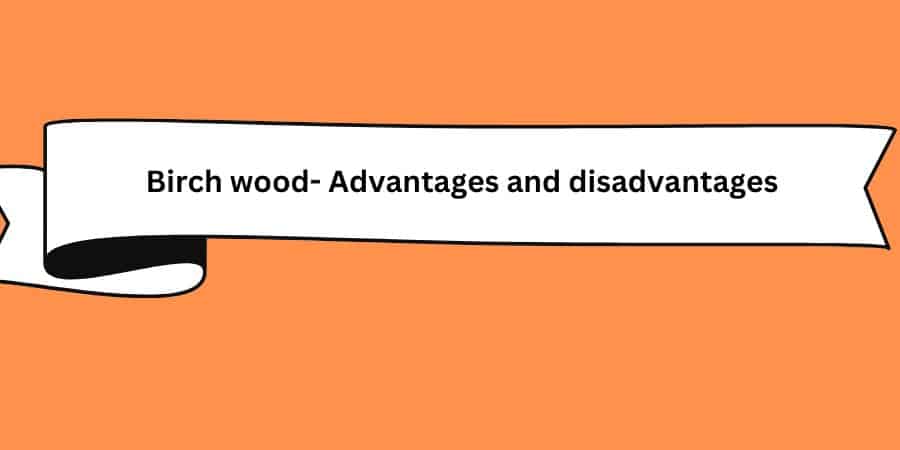Birch is a type of hardwood that belongs to the Betula genus.
There are more than a dozen species of birch trees that are native to North America, with the most common being white birch, yellow birch, and black birch.
Yellow birch and white birch are the most frequently used species in woodworking.
In the United States, when birch is mentioned as an option for fine furniture, it usually refers to yellow birch wood, which is also known as golden birch.
Yellow birch wood is light in color and has a smooth grain pattern that is similar to maple wood, although birch tends to yellow more visibly over time.
In the past, during the 1960s and 1970s, birch wood was widely used in home furnishings and cabinetry.
Today, it is mostly used for utilitarian purposes such as shelving, crates, and plywood.
Although yellow birch wood is still used in furniture making today, it is valued more for its durability and is often hidden under layers of upholstery rather than being displayed.
Comparison of birchwood with other similar woods
| Birch | 48 | 1260 | Light to medium brown with a hint of red | Medium | Moderate | Moderately priced |
| Maple | 44-56 | 1450 | Cream to light reddish-brown | Slow | Moderate to high | Moderately priced to expensive |
| Oak | 44-49 | 1290 | Light to medium brown with a yellow or reddish tint | Slow | Moderate to high | Moderately priced to expensive |
| Cherry | 35-44 | 995 | Light pink to reddish-brown | Slow | Expensive | Limited availability |
| Ash | 41-43 | 1320 | Light to medium brown with a white or grayish tint | Moderate | Moderate to high | Moderately priced |
As we can see from the table, birch wood has a density of 48 lbs/ft^3, which falls between the density of maple and oak.
Its Janka hardness rating of 1260 is also similar to oak, but less than maple.
Birch wood is generally light to medium brown with a hint of red, and its growth rate is moderate.
In terms of price, it is moderately priced and widely available.
Compared to cherry wood, birch wood has a higher density and Janka hardness rating, but cherry wood has a more unique color and is more expensive.
Ash wood is also similar in density and Janka hardness rating to birch wood, but ash wood has a different color and is more widely available.
Advantages of Birch wood
High Density: Birch wood has a relatively high density, making it strong and durable, which is beneficial for use in furniture and flooring.
Birch has good mechanical strength, good elasticity and obvious growth rings, the furniture made of birch has the advantages of lubrication, wear resistance and clear stripe.
Good Hardness: Birch wood has a good Janka hardness rating of 1260, which means it is resistant to wear and tear and can withstand high foot traffic in flooring applications.
Affordable: Birch wood is moderately priced, making it a good option for those on a budget who still want a durable and versatile wood.
Widely Available: Birch wood is widely available and can be found at most lumber yards and home improvement stores, making it easily accessible for woodworking projects.
Good for Staining and Finishing: Birch wood takes stain and finishes well, allowing for a wide range of colors and finishes to be applied to the wood.
Disadvantages of birch wood
Average Stability: Birch wood has average stability and can be prone to warping and shrinking if not properly dried and acclimated before use in a project.
Limited Color Range: Birch wood has a limited range of color, mostly in the light to medium brown range, which may not be desirable for some woodworking projects.
Vulnerable to Decay: Birch wood is vulnerable to decay if not properly maintained, which can limit its lifespan and durability.
Not as Hard as Some Other Hardwoods: While birch wood has a good hardness rating, it is not as hard as some other hardwoods, which may limit its use in certain applications.






